Is Your Home Free from Toxic Molds
Have you ever walked into a room and caught a whiff of something musty? That unpleasant odor might be more than just a sign of neglect; it could indicate the presence of toxic molds lurking in your home. Toxic molds are not just a nuisance; they can pose serious health risks to you and your loved ones. In this article, we’ll explore the dangers of toxic molds in homes, how to identify them, and effective prevention and remediation strategies to ensure a safe living environment for you and your family.
Toxic molds, often referred to as "black molds," can wreak havoc on indoor air quality and overall health. They thrive in damp, warm environments and can release spores that become airborne, making them easy to inhale. There are several types of toxic molds, including Stachybotrys chartarum, Aspergillus, and Penicillium. Each of these molds has unique characteristics and can lead to various health issues. Whether you're dealing with a small patch in the corner of your basement or a larger infestation, understanding these molds is crucial for maintaining a healthy home.
Recognizing the signs of mold infestation is crucial for early intervention. Mold can be sneaky, often hiding in places you might not immediately think to check. Here are some common indicators that suggest the presence of mold in your home:
- Visible Mold Growth: Patches of mold can appear on walls, ceilings, or furniture.
- Color Variations in Mold: Mold can come in various colors, which can tell you more about its type and potential risks.
- Unpleasant Odors: A musty smell often accompanies mold presence, indicating moisture issues.
Visible mold growth can be alarming. If you notice patches of mold on various surfaces, it’s essential to act quickly. Mold can appear in shades of green, black, or even white, and its presence often indicates elevated moisture levels in your home. This is not just unsightly; it can also lead to significant health risks if left untreated. Mold can grow on a variety of surfaces, including wood, drywall, and even fabric, which makes it even more critical to identify and address the issue promptly.
Mold comes in various colors, and each color can indicate different types, which may imply varying levels of toxicity. For instance, black mold (Stachybotrys chartarum) is notorious for its health risks, while green mold (Aspergillus) can also be harmful but may not always pose immediate dangers. Understanding these color variations can help you assess the situation more accurately. If you find mold in your home, consider its color as a clue to its potential risks.
A musty smell often accompanies mold presence. If you notice a persistent, unpleasant odor in your home, it could be a sign that mold is hiding somewhere. These odors can be an indication of poor indoor air quality and can lead to respiratory issues if inhaled over time. Detecting these odors early can be your first step towards ensuring a healthier living space.
Mold exposure can lead to various health issues, particularly for individuals with allergies, asthma, or weakened immune systems. Symptoms can range from mild to severe and may include:
- Respiratory problems
- Skin irritation
- Eye irritation
- Headaches
- Fatigue
Addressing infestations promptly is essential to avoid these health risks. If you suspect mold in your home, it’s crucial to take action quickly to protect your family's health.
Prevention is key to a mold-free home. There are effective strategies for reducing moisture and improving ventilation to prevent mold growth in your living spaces. Simple actions can make a significant difference in keeping your home safe and healthy.
Maintaining optimal humidity levels is essential for preventing mold. Ideally, indoor humidity should be kept between 30% and 50%. You can monitor humidity levels using a hygrometer, and if you find that your home is too humid, consider using dehumidifiers or air conditioners to help control moisture.
Effective ventilation can significantly reduce mold risks. Ensure that your home is well-ventilated by opening windows when weather permits and using exhaust fans in areas prone to moisture, such as kitchens and bathrooms. Proper ventilation helps keep your home dry and discourages mold growth.
If mold is found, prompt action is necessary. There are various remediation strategies, including DIY methods and when to call in professionals for effective mold removal. It’s crucial to tackle the problem head-on to ensure a safe living environment.
For minor infestations, DIY methods can be effective. Homeowners can use a mixture of water and detergent to scrub small areas of mold. Additionally, a solution of vinegar or hydrogen peroxide can help kill mold spores. However, always remember to wear protective gear like gloves and masks to avoid inhaling spores during the cleaning process.
Some mold situations require expert intervention. If you notice mold covering a large area (more than 10 square feet), or if you have health concerns, it’s time to contact a mold remediation professional. They have the tools and expertise to handle the situation safely and thoroughly, ensuring that your home is mold-free.
1. How can I tell if I have toxic mold in my home?
Look for visible mold growth, musty odors, and signs of water damage. If you suspect mold, consider getting a professional inspection.
2. Can I remove mold myself?
For small areas, yes. Use appropriate cleaning solutions and protective gear. For larger infestations, it’s best to hire a professional.
3. What should I do if I find mold in my home?
Act quickly! Clean small areas yourself, improve ventilation, and control humidity. For extensive mold, contact a professional.
4. How can I prevent mold from returning?
Keep humidity levels low, ensure proper ventilation, and address any leaks or water damage immediately.
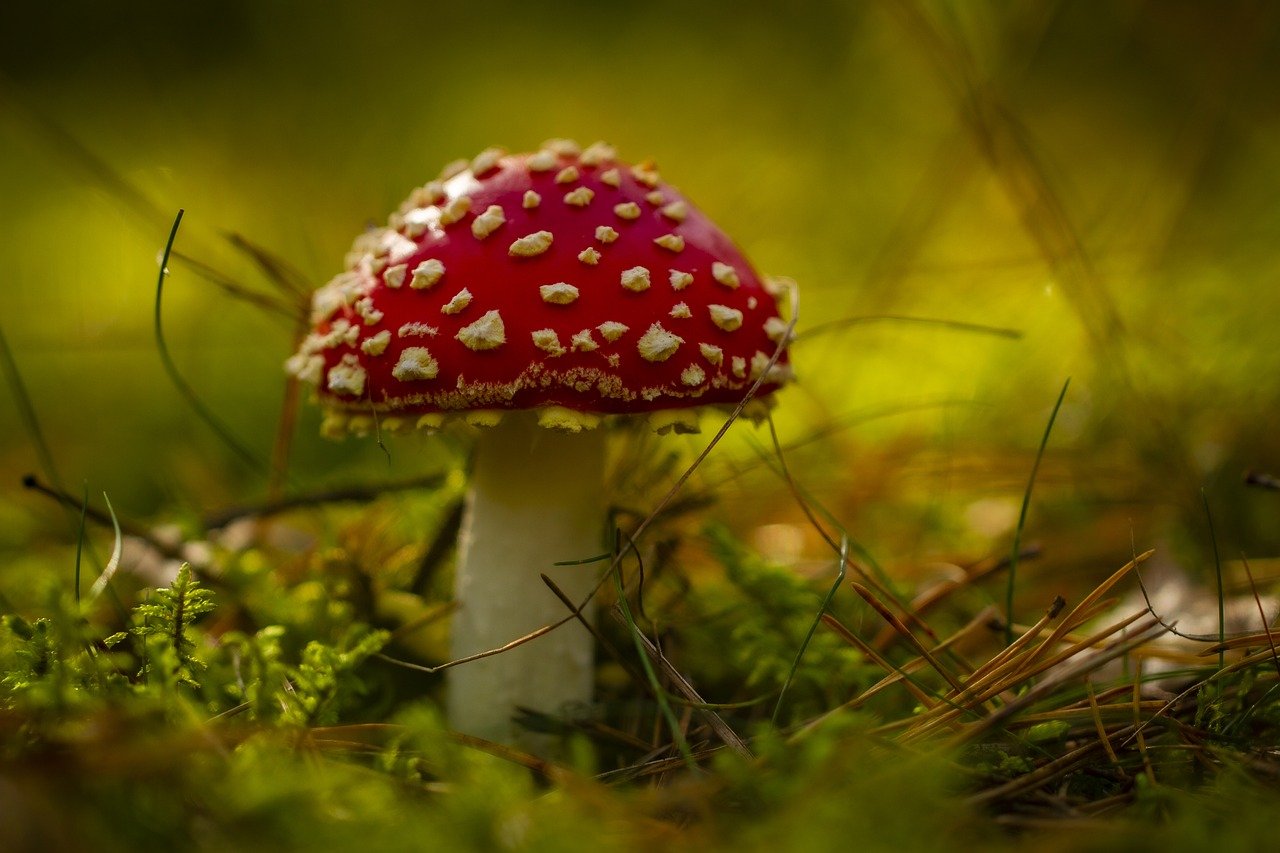
Understanding Toxic Molds
This article explores the dangers of toxic molds in homes, how to identify them, and effective prevention and remediation strategies to ensure a safe living environment for you and your family.
Toxic molds are not just an unsightly nuisance; they can pose serious health risks to you and your loved ones. These molds thrive in damp, warm environments, making your home a perfect breeding ground if not properly maintained. There are several types of toxic molds, each with its own characteristics and potential health impacts. Common varieties include Stachybotrys chartarum, often referred to as black mold, and Aspergillus, which can be found in various forms. Understanding these molds is crucial for protecting your indoor air quality and overall health.
When we talk about toxic molds, it’s essential to recognize that they release spores and mycotoxins into the air. These can lead to a range of health issues, particularly for sensitive groups such as children, the elderly, and those with pre-existing respiratory conditions. Symptoms of mold exposure can vary widely, from mild allergic reactions to severe respiratory distress. In fact, the effects of mold can sometimes be mistaken for other illnesses, which is why awareness is key.
Here are a few notable characteristics of toxic molds:
- Moisture-loving: They thrive in damp areas, especially where water damage has occurred.
- Fast-growing: Molds can multiply rapidly under the right conditions, leading to extensive infestations within a short time.
- Varied appearances: Toxic molds can appear in various colors, including black, green, and white, which can make identification tricky.
To further illustrate the importance of understanding toxic molds, let's take a look at a simple table that highlights some common types of toxic molds and their associated health risks:
| Mold Type | Common Locations | Health Risks |
|---|---|---|
| Stachybotrys chartarum (Black Mold) | Bathrooms, basements, water-damaged areas | Respiratory issues, chronic fatigue, headaches |
| Aspergillus | Air conditioning systems, damp walls | Allergic reactions, lung infections |
| Penicillium | Water-damaged materials, carpets | Allergies, asthma attacks, sinus infections |
As you can see, different types of molds can be found in various locations throughout your home, and each comes with its own set of health risks. Thus, being proactive about mold prevention and remediation is vital for maintaining a healthy living environment.
In conclusion, understanding toxic molds is the first step toward safeguarding your home and health. By recognizing the types of molds, their characteristics, and the potential health implications, you can take informed actions to prevent infestations and protect your family. Remember, in the battle against mold, knowledge is your best weapon!
Recognizing the signs of mold infestation is crucial. Here, we outline common indicators that suggest the presence of mold in your home, including visual clues and musty odors.
Visible mold growth can be alarming. This subsection discusses how to identify mold patches on various surfaces and what they might indicate regarding moisture levels in your home.
Mold comes in various colors, each potentially indicating different types. We explore the significance of color variations and what they mean for your health and home.
A musty smell often accompanies mold presence. This section explains how to detect these odors and their implications for indoor air quality and health risks.
Mold exposure can lead to various health issues. This part discusses the symptoms and conditions linked to toxic mold exposure, emphasizing the importance of addressing infestations promptly.
Prevention is key to a mold-free home. Here, we outline effective strategies for reducing moisture and improving ventilation to prevent mold growth in your living spaces.
Maintaining optimal humidity levels is essential. This subsection provides tips on monitoring and controlling indoor humidity to create an inhospitable environment for mold.
Effective ventilation can significantly reduce mold risks. We discuss various ventilation techniques that can help keep your home dry and mold-free.
If mold is found, prompt action is necessary. This section covers various remediation strategies, including DIY methods and when to call in professionals for effective mold removal.
For minor infestations, DIY methods can be effective. This subsection outlines safe and practical steps homeowners can take to remove mold without professional help.
Some mold situations require expert intervention. Here, we highlight signs that indicate when it’s time to contact a mold remediation professional for safe and thorough removal.
In this section, we address some common questions regarding toxic molds, their risks, and how to deal with them effectively.
- What are the health effects of mold exposure? Mold exposure can lead to respiratory issues, allergic reactions, and in some cases, more severe health problems.
- How can I tell if I have mold in my home? Look for visible mold growth, musty odors, and moisture problems in areas like bathrooms and basements.
- What should I do if I find mold? For small areas, you can use DIY methods to clean it. For larger infestations, consider hiring a professional.
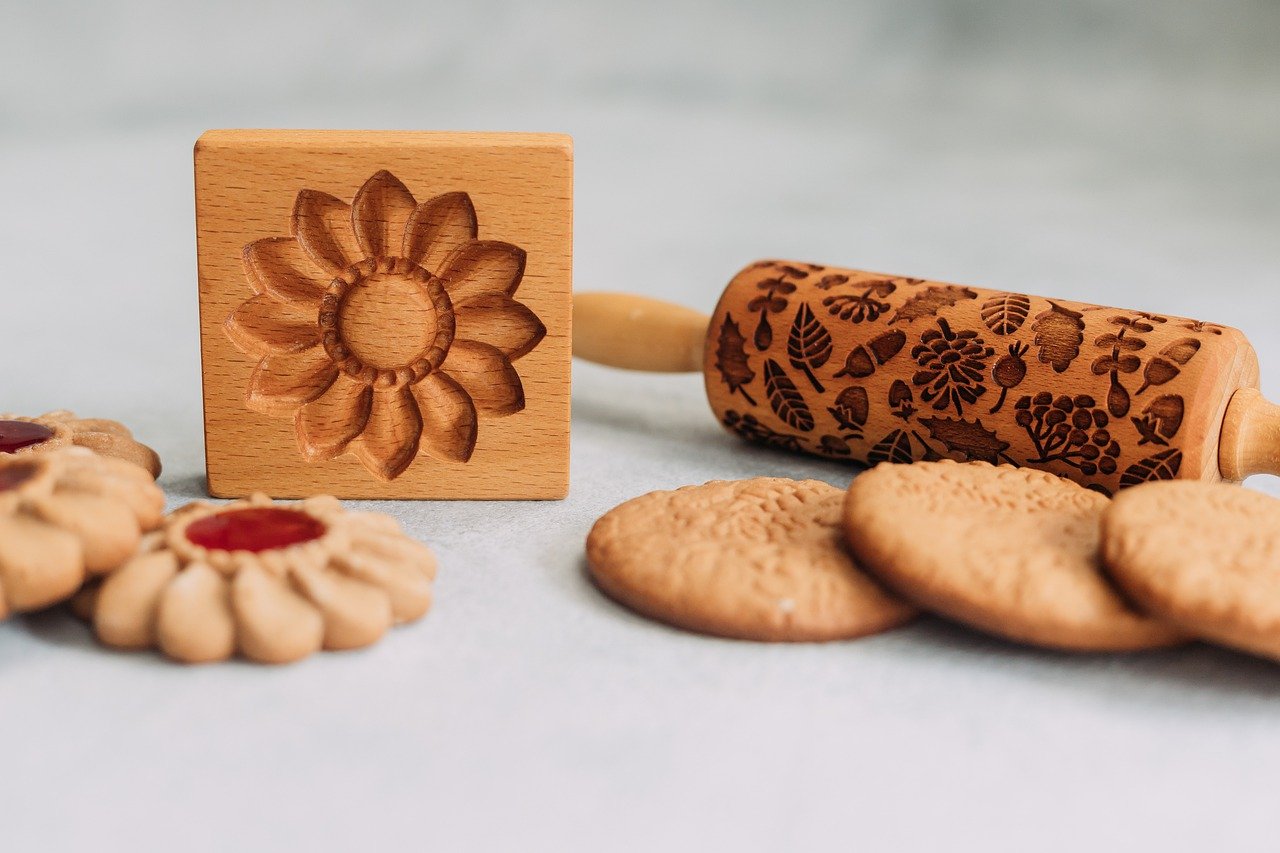
Signs of Mold Infestation
Recognizing the signs of mold infestation is crucial for maintaining a healthy home environment. Mold can be sneaky, often hiding in places you might not think to check. If left unchecked, it can lead to serious health issues and structural damage. So, how do you know if your home has been invaded by this unwanted guest? There are several indicators to watch out for. From visible growth to unpleasant odors, understanding these signs can help you take action before it's too late.
First and foremost, one of the most alarming signs of mold infestation is visible mold growth. This can appear as patches of green, black, or even white fuzz on walls, ceilings, or other surfaces. It’s crucial to act quickly when you see these patches, as they can indicate elevated moisture levels in your home. Mold thrives in damp environments, so if you notice it growing, you can bet that there’s a moisture problem lurking nearby. Check areas like:
- Bathrooms
- Basements
- Behind appliances (like refrigerators and washing machines)
- Under sinks
These are prime spots for mold to take hold, especially if they’re not well-ventilated. Keep an eye out for any discoloration or unusual spots that seem to be growing over time.
Mold comes in a variety of colors, and each color can signify different types of mold, each with its own potential health risks. For instance, black mold (Stachybotrys chartarum) is notorious for its toxicity and can cause serious health issues. On the other hand, green mold is often less harmful but still indicates a moisture problem that needs addressing. Here’s a brief overview of different mold colors and what they might mean:
| Mold Color | Potential Risks |
|---|---|
| Black | Highly toxic; can cause respiratory issues |
| Green | Less harmful; indicates moisture issues |
| White | Can be less harmful; often indicates a damp environment |
| Yellow | Can indicate a moisture issue; generally less harmful |
Understanding these color variations can help you determine the urgency of your mold problem. If you see black mold, it’s time to take immediate action!
Another telltale sign of mold presence is the unmistakable musty smell that often accompanies it. This odor can be quite strong and is usually a result of mold spores being released into the air. If you walk into a room and notice a damp, earthy smell that seems out of place, it could very well be a sign of mold lurking nearby. Not only is this odor unpleasant, but it also indicates that the air quality in your home is compromised. It’s important to address these odors promptly, as they can lead to health risks over time.
Exposure to mold can lead to various health issues, including respiratory problems, allergies, and even more severe conditions for those with compromised immune systems. If you or your family members start experiencing symptoms like sneezing, coughing, or skin irritation, it might be time to investigate further. Addressing mold infestations promptly can help protect your health and well-being.
In summary, keeping an eye out for visible mold growth, understanding the significance of mold color variations, and being aware of unpleasant odors can help you identify a mold infestation early. If you suspect mold in your home, don’t hesitate to take action—your health and home depend on it!
Q: How can I prevent mold from growing in my home?
A: Keeping humidity levels low, ensuring proper ventilation, and addressing leaks or water damage promptly can help prevent mold growth.
Q: Is all mold dangerous?
A: Not all mold is toxic, but it’s best to address any mold growth as it can indicate moisture problems and lead to health issues.
Q: When should I call a professional for mold removal?
A: If the mold covers a large area (more than 10 square feet), or if you suspect toxic mold, it’s best to call a professional for safe removal.

Visible Mold Growth
Visible mold growth can be one of the most alarming signs of a problem in your home. It often appears as unsightly patches or spots that can vary in size, color, and texture. These patches can develop on a variety of surfaces, including walls, ceilings, floors, and even furniture. It's crucial to address these alarming signs promptly, as they not only indicate the presence of moisture but can also lead to serious health issues for you and your family.
When you spot mold, it's essential to understand that its presence is usually a symptom of an underlying issue, often related to excess moisture. Common areas where mold tends to thrive include bathrooms, kitchens, and basements—places where humidity levels are typically higher. The key is to identify these growths as soon as possible to prevent them from spreading. For instance, if you find a small patch of mold in the corner of your bathroom, it could be a sign of a leaking pipe or inadequate ventilation.
Here are some common surfaces where you might encounter visible mold growth:
- Wood: Mold can easily latch onto wooden surfaces, particularly if they are damp or poorly sealed.
- Drywall: This material is highly susceptible to mold, especially when exposed to moisture from leaks or high humidity.
- Carpets: Mold can grow in carpets that have been exposed to water or high humidity, often hidden from plain sight.
- Ceilings: Water stains on ceilings can indicate mold growth, particularly in areas beneath leaky roofs or pipes.
Understanding the color variations in mold can also provide insight into the type of mold you might be dealing with. For example, black mold (Stachybotrys chartarum) is notorious for its toxicity, while green mold might indicate a different species that could also pose health risks. It's essential to note that not all mold is harmful, but without proper identification, it’s best to treat all mold growth as potentially dangerous.
If you notice visible mold, don’t ignore it. The longer you wait, the more extensive the problem can become, leading to increased remediation costs and potential health risks. Addressing mold growth promptly can save you from future headaches and ensure a safe living environment for you and your loved ones.

Color Variations in Mold
Mold is not just a pesky intruder in your home; it comes dressed in a variety of colors, each telling its own story about what it is and how it can impact your health. Have you ever walked into a damp room and noticed patches of green, black, or even white? These color variations are more than just visual nuisances; they can indicate the type of mold present and the potential risks associated with them.
For instance, black mold, often referred to as Stachybotrys chartarum, is notorious for its toxic properties and can lead to serious health issues. Its dark, slimy appearance is a clear sign that you need to take immediate action. On the other hand, green mold, which can be found in various shades, is typically less toxic but can still cause allergic reactions and respiratory problems. The color alone can provide you with a hint about the severity of the situation and the urgency with which you should respond.
Here’s a quick breakdown of some common mold colors and what they might signify:
| Mold Color | Common Types | Health Implications |
|---|---|---|
| Black | Stachybotrys chartarum | Can cause serious respiratory issues and other health problems. |
| Green | Aspergillus, Penicillium | May cause allergies and respiratory issues. |
| White | Trichoderma | Can lead to allergic reactions; less toxic than others. |
| Yellow | Aspergillus flavus | Can produce mycotoxins; potential health risks. |
Additionally, the texture of the mold can also provide clues. For example, fuzzy or powdery molds often indicate a more advanced stage of growth, while wet or slimy molds may suggest recent moisture issues. It's crucial to understand these variations not just for aesthetic reasons but for your health and safety. Each type of mold has its own unique characteristics, and recognizing these can empower you to take the necessary steps to mitigate risks.
In essence, the colors of mold are like a warning system. They signal the presence of moisture and potential health hazards lurking in your home. If you spot any mold, regardless of its color, don’t ignore it! Taking action sooner rather than later can save you from more severe health issues down the line.
- What should I do if I find mold in my home? It's important to assess the situation. For small patches, you might be able to clean it yourself, but for larger infestations, consider contacting a professional.
- Can all molds be harmful? Not all molds are toxic, but even non-toxic molds can cause allergic reactions and respiratory problems in some individuals.
- How can I prevent mold growth? Maintaining low humidity levels, ensuring proper ventilation, and fixing leaks promptly can help keep mold at bay.
- Is it safe to paint over mold? No, painting over mold is not a solution. It can trap moisture and lead to further growth beneath the paint.

Unpleasant Odors
When it comes to identifying mold in your home, one of the most telling signs can be the presence of . Often described as a musty or earthy smell, these odors are not just annoying; they can indicate a serious problem lurking in your walls or under your floors. Have you ever walked into a room and immediately sensed something was off? That could very well be mold trying to make its presence known.
The reason behind these musty smells is simple: mold releases volatile organic compounds (VOCs) as it grows. These compounds are what create that distinctive odor, which can be quite potent. If you notice this smell, it’s crucial to investigate further, as it could be a sign of mold growth hidden from plain sight. Mold often thrives in damp, dark places, such as basements, attics, or behind walls, making it easy to overlook until the smell becomes overwhelming.
Here are some common areas where you might encounter these unpleasant odors:
- Bathrooms: High humidity levels make bathrooms prime locations for mold growth, particularly around sinks, tubs, and toilets.
- Kitchens: Food spills and moisture can lead to mold, especially in areas under the sink or around appliances.
- Basements: Often damp and poorly ventilated, basements can harbor mold that emits a strong musty smell.
- Attics: Poor ventilation and insulation can trap moisture, leading to mold growth that produces foul odors.
Ignoring these odors can have serious consequences for both your health and your home. Mold can lead to respiratory issues, allergies, and other health problems, especially for those who are sensitive or have pre-existing conditions. Therefore, if you detect a musty smell, consider it a red flag. It’s not just a nuisance; it’s a call to action.
In addition to health risks, the presence of mold can also lead to structural damage in your home. Mold can weaken walls, ceilings, and floors, leading to costly repairs down the line. So, if you notice that musty odor, don’t just air out the room—take it seriously and start investigating. You might need to peel back some layers to uncover the source of the smell and, ultimately, the mold.
In summary, unpleasant odors are often your first warning sign of mold infestation. If you catch a whiff of that musty smell, it’s time to act. Investigate, identify, and address the issue before it spirals into a larger problem. Remember, a healthy home starts with clean air!
1. What should I do if I smell mold in my home?
If you detect a musty smell, it's essential to investigate further. Check common areas for mold growth, and consider using moisture meters or professional inspections if necessary.
2. Can I remove mold odors without removing the mold?
While you can mask odors with air fresheners, it's crucial to address the underlying mold issue to ensure a safe living environment.
3. How can I prevent mold odors from returning?
Regular cleaning, controlling humidity levels, and ensuring proper ventilation can help prevent mold odors from returning.
4. Are there any natural remedies for mold odors?
Vinegar and baking soda are popular natural remedies that can help absorb and neutralize odors, but they won't eliminate the mold itself.

Health Risks Associated with Mold
Mold is not just an unsightly nuisance; it can be a serious threat to your health. When you think about mold, you might picture those dark patches creeping up your bathroom walls or the fuzzy spots on old bread. But what many people don't realize is that mold can release spores and mycotoxins into the air, which can lead to a variety of health issues. The symptoms can range from mild to severe, and they often depend on an individual's sensitivity to mold. Have you ever wondered why some people seem to be more affected by mold than others? It’s all about the immune system and overall health.
Common health effects associated with mold exposure include:
- Respiratory Issues: Mold spores can trigger asthma attacks and exacerbate existing respiratory conditions. Even healthy individuals may experience coughing, sneezing, and a runny nose when exposed to mold.
- Allergic Reactions: For those with mold allergies, exposure can result in symptoms such as itchy eyes, skin rashes, and sinus congestion. It's like your body is waging war against an invisible enemy.
- Neurological Symptoms: Some studies suggest that prolonged exposure to certain molds may lead to neurological issues, including headaches, memory loss, and difficulty concentrating. Imagine trying to focus at work while your brain feels foggy!
- Infections: In rare cases, mold can cause infections, particularly in individuals with weakened immune systems. This is where things can get serious, as infections may require medical intervention.
It's essential to recognize that even if you don't have a pre-existing condition, mold exposure can still pose risks. Children, the elderly, and those with compromised immune systems are particularly vulnerable. If you or a family member are experiencing unexplained health issues, it might be wise to consider the possibility of mold in your home. After all, your living environment should be a safe haven, not a source of health problems!
In addition to the immediate health risks, long-term exposure to toxic molds can lead to chronic health issues. Some molds, like Stachybotrys chartarum, commonly known as black mold, are notorious for their severe health implications. Understanding these risks is crucial for anyone living in a mold-prone environment. So, what can you do to protect yourself and your family? Being proactive about mold prevention and remediation is the key to ensuring a healthy home.

Preventing Mold Growth
When it comes to keeping your home safe from the clutches of toxic molds, prevention truly is the best medicine. Imagine your home as a fortress; just as you wouldn't leave the gates wide open for intruders, you need to take proactive steps to keep mold at bay. One of the primary culprits behind mold growth is excess moisture, so controlling humidity levels is crucial. Ideally, you want to maintain indoor humidity between 30% and 50%. This range creates an environment that is inhospitable to mold spores, which thrive in damp conditions.
There are several effective strategies you can employ to reduce moisture and improve ventilation throughout your living spaces. For instance, using dehumidifiers in areas prone to dampness, such as basements or bathrooms, can significantly lower humidity levels. Additionally, regularly checking for leaks in plumbing and roofs can help you catch potential water issues before they escalate into full-blown mold infestations. It's like being a detective in your own home—stay vigilant!
Another critical aspect of mold prevention is ensuring proper ventilation. Stagnant air is a breeding ground for mold, so it’s essential to allow fresh air to circulate. Here are a few practical ventilation techniques:
- Open Windows: Whenever weather permits, open windows to let in fresh air and reduce humidity.
- Use Exhaust Fans: Install exhaust fans in kitchens and bathrooms to expel moisture-laden air outside.
- Air Ventilation Systems: Consider investing in an air exchange system that continuously brings in fresh air while exhausting stale air.
By implementing these strategies, you can create a living environment that is not only comfortable but also safe from mold growth. Remember, mold prevention is an ongoing process, and regular maintenance is key. Just like you wouldn’t ignore a small crack in your wall, don’t overlook small signs of moisture or poor ventilation. Staying proactive will ensure your home remains a healthy haven for you and your family.
1. What is the ideal humidity level to prevent mold?
The ideal indoor humidity level to prevent mold growth is between 30% and 50%.
2. How can I tell if my home has a mold problem?
Common signs of mold include visible patches on walls or ceilings, musty odors, and health symptoms like sneezing or coughing.
3. Are there specific areas in my home that are more prone to mold?
Yes, areas with high moisture levels, such as bathrooms, kitchens, and basements, are particularly susceptible to mold growth.
4. Can I remove mold myself, or should I hire a professional?
For minor infestations, DIY methods can be effective. However, if the mold covers a large area or you have health concerns, it’s best to consult a professional.
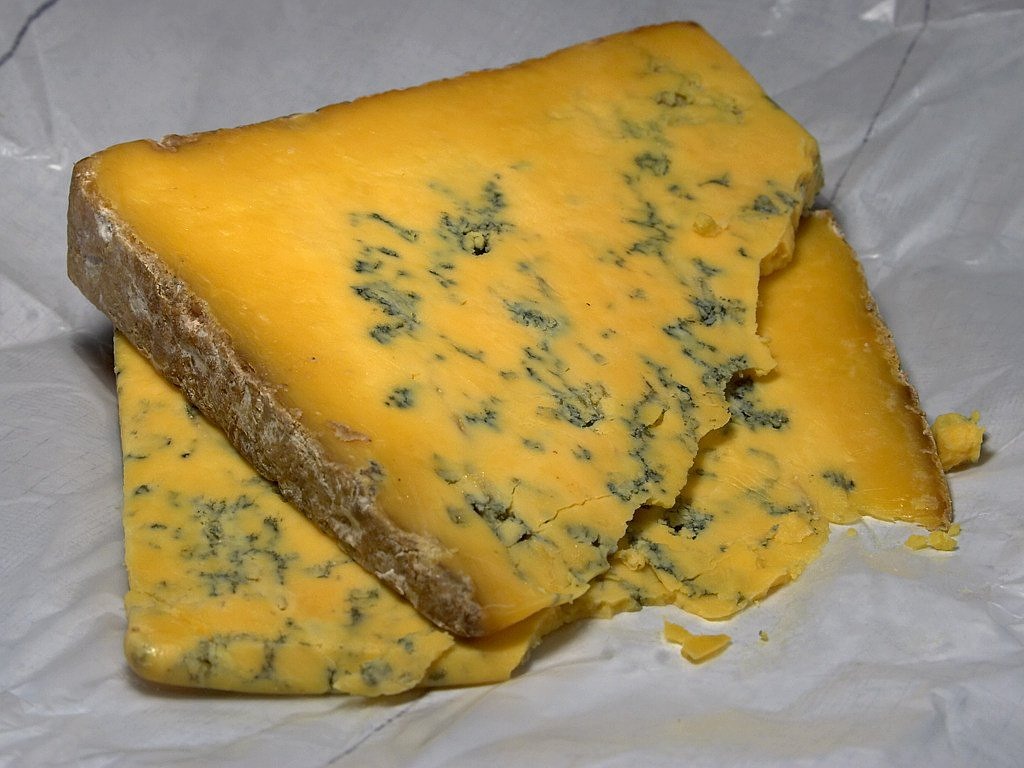
Controlling Humidity Levels
Maintaining optimal humidity levels in your home is crucial for preventing mold growth. Think of humidity as the air's moisture content; when it’s too high, it creates a perfect breeding ground for mold spores. Ideally, indoor humidity should be kept between 30% and 50%. This range not only keeps your home comfortable but also minimizes the risk of mold infestations.
To effectively control humidity levels, you can implement several strategies. First, consider using a hygrometer—a device that measures humidity levels. Place it in various rooms to monitor moisture content. If you notice levels consistently above 50%, it’s time to take action. Here are some practical tips to help you keep humidity in check:
- Use Dehumidifiers: These devices draw moisture from the air, making them an excellent investment for particularly humid areas like basements or bathrooms.
- Air Conditioning: Running your air conditioning not only cools your home but also helps to dehumidify the air.
- Ventilation: Ensure that your home is well-ventilated. Open windows when weather permits and use exhaust fans in areas like kitchens and bathrooms to expel humid air.
Additionally, be mindful of activities that can increase humidity, such as cooking and showering. Using lids on pots while cooking and taking shorter, cooler showers can significantly reduce the amount of moisture released into the air. After showering, it’s a good idea to leave the bathroom door open to allow steam to escape.
Another effective method for controlling humidity is to improve your home’s insulation. Proper insulation in walls and attics prevents warm, moist air from entering your living spaces, which can help maintain a balanced humidity level. If you notice condensation on windows or walls, that’s a clear sign that humidity levels are too high and adjustments need to be made.
In summary, controlling humidity levels is a proactive approach to mold prevention. By monitoring humidity, utilizing dehumidifiers, ensuring proper ventilation, and being mindful of moisture-producing activities, you can create a less welcoming environment for mold and ensure a healthier home for you and your family.
Q: What is the ideal humidity level for a home?
A: The ideal indoor humidity level is typically between 30% and 50%. This range helps prevent mold growth and keeps your living environment comfortable.
Q: How can I measure humidity levels in my home?
A: You can use a hygrometer, which is a simple device designed to measure humidity levels. They are widely available and easy to use.
Q: What are the signs of high humidity in my home?
A: Signs include condensation on windows, a musty smell, mold growth, and increased allergy symptoms. If you notice any of these, it’s time to check your humidity levels.
Q: When should I consider using a dehumidifier?
A: If your humidity levels are consistently above 50%, or if you live in a particularly humid climate, a dehumidifier can help maintain a healthier indoor environment.
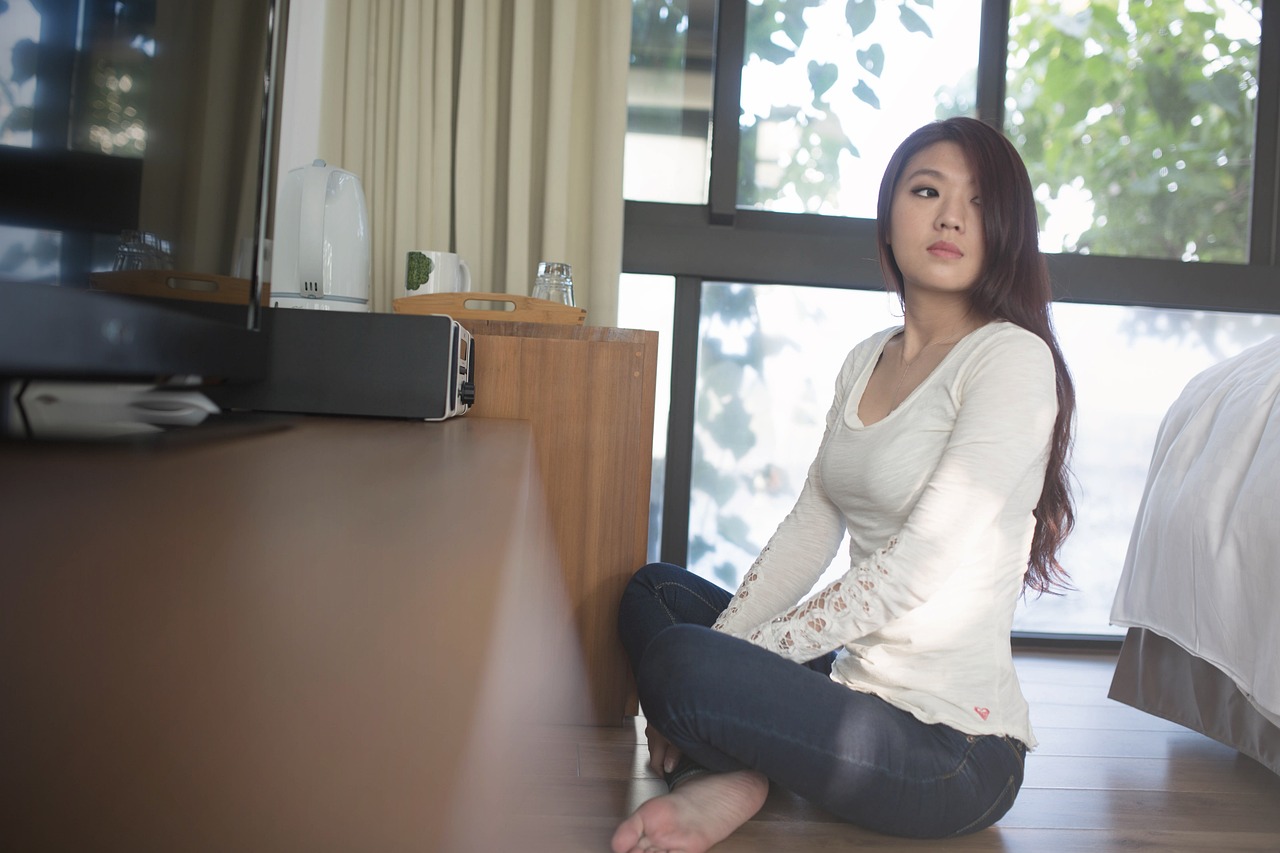
Proper Ventilation Techniques
When it comes to keeping your home free from toxic molds, proper ventilation is your best friend. Imagine your house as a living organism; just like we need fresh air to breathe, your home needs a way to circulate air to prevent moisture buildup. Without adequate ventilation, stagnant air can create a perfect breeding ground for mold. So, how can you ensure that your home is well-ventilated? Let’s dive into some effective techniques!
First off, consider using exhaust fans in moisture-prone areas like kitchens and bathrooms. These fans work wonders by pulling humid air out of your home, significantly reducing the chances of mold growth. For instance, after cooking or taking a hot shower, running the exhaust fan can help clear out the moisture that would otherwise linger in the air. It's like giving your home a breath of fresh air!
Another technique to enhance ventilation is to open your windows regularly. This simple act allows fresh air to flow in while pushing stale air out. However, it's essential to be mindful of outdoor humidity levels; if it's a particularly humid day outside, it might be best to keep those windows shut. Think of it as opening a window to let the breeze in but closing it when the storm rolls in.
Additionally, installing vents can be a game-changer. Vents in your attic and crawl spaces help regulate airflow throughout your home. They allow hot air to escape in the summer and prevent cold air from settling in during the winter. This not only helps with mold prevention but also contributes to energy efficiency. A well-ventilated attic is like a well-oiled machine, working seamlessly to keep your home comfortable.
Moreover, you can create a cross-ventilation effect by strategically placing fans in your home. Positioning a fan near a window can draw in fresh air while another fan near a door can push out stale air. This technique is particularly effective on breezy days, as it maximizes airflow throughout your living space. Just imagine how refreshing it feels to walk into a room filled with a gentle, cool breeze!
Finally, consider the use of dehumidifiers in areas that tend to trap moisture, such as basements or laundry rooms. These devices work tirelessly to extract excess moisture from the air, creating an environment that is hostile to mold growth. Think of a dehumidifier as a superhero for your home, fighting off the villains of humidity and mold!
In summary, maintaining proper ventilation in your home is crucial for preventing toxic mold growth. By utilizing exhaust fans, opening windows, installing vents, using fans for cross-ventilation, and employing dehumidifiers, you can create a healthier living environment. Remember, a well-ventilated home is not just about comfort; it's about safeguarding your family's health!
- What is the ideal humidity level to prevent mold growth? Ideally, keep indoor humidity levels between 30% and 50%.
- How often should I use exhaust fans? Use exhaust fans during and after activities that produce moisture, such as cooking or showering.
- Can I ventilate my home without windows? Yes! You can use exhaust fans, vents, and air purifiers to improve air circulation.
- How do I know if my home is properly ventilated? Signs of proper ventilation include a lack of musty odors, dry surfaces, and no visible mold growth.

Remediation Strategies for Mold Removal
When it comes to dealing with mold in your home, taking swift and effective action is essential. Mold can not only damage your property but also pose serious health risks to you and your family. The good news is that there are several remediation strategies that can help you tackle this issue head-on. Whether you’re dealing with a minor infestation or something more severe, understanding these strategies can empower you to create a safer living environment.
For minor mold issues, DIY mold removal methods can be quite effective. You can start by gathering some basic supplies such as gloves, a mask, and cleaning agents like vinegar or bleach. Here’s a simple step-by-step approach:
- Identify the Source: Before you start cleaning, it’s crucial to find out where the moisture is coming from. This could be a leaky pipe, condensation, or even high humidity levels.
- Prepare the Area: Ensure the affected area is well-ventilated. Open windows and doors to allow fresh air to circulate.
- Clean the Mold: Use a mixture of water and detergent or a specialized mold removal product to scrub the mold off surfaces. Make sure to wear protective gear during this process.
- Dry the Area: After cleaning, dry the area thoroughly to prevent mold from returning. Dehumidifiers can be helpful here.
However, some situations demand a more professional approach. If the mold covers a large area (greater than 10 square feet), or if it’s found in hard-to-reach places like inside walls or ceilings, it might be time to call in the experts. Professional mold remediation services have the tools and expertise to handle significant infestations safely and effectively. Here are some signs that indicate you should seek professional help:
- The mold is extensive and covers a large area.
- You have health issues that could be exacerbated by mold exposure.
- The mold is in your HVAC system or other complex areas.
- You’ve tried DIY methods, but the problem persists.
In addition to removing existing mold, it’s crucial to implement preventive measures to stop mold from returning. This includes controlling humidity levels and ensuring proper ventilation throughout your home. Remember, mold thrives in damp and poorly ventilated spaces, so keeping your living environment dry and airy is key.
Finally, keeping an eye on potential problem areas such as bathrooms, kitchens, and basements can help you catch mold growth early on. Regular inspections and maintenance can save you a lot of trouble down the line.
Q: How can I tell if I have a mold problem?
A: Look for visible mold growth, musty odors, and any signs of water damage. If you notice any of these indicators, it’s wise to investigate further.
Q: Can I remove mold myself?
A: Yes, for small areas, DIY methods can be effective. However, for larger infestations or if you have health concerns, it’s best to call a professional.
Q: What should I do if I find mold in my home?
A: Start by identifying the source of moisture, clean the affected area, and dry it thoroughly. If the mold is extensive, consider hiring a mold remediation professional.
Q: How can I prevent mold from returning?
A: Control humidity levels, ensure proper ventilation, and regularly inspect areas prone to moisture. Keeping your home dry is the best defense against mold.
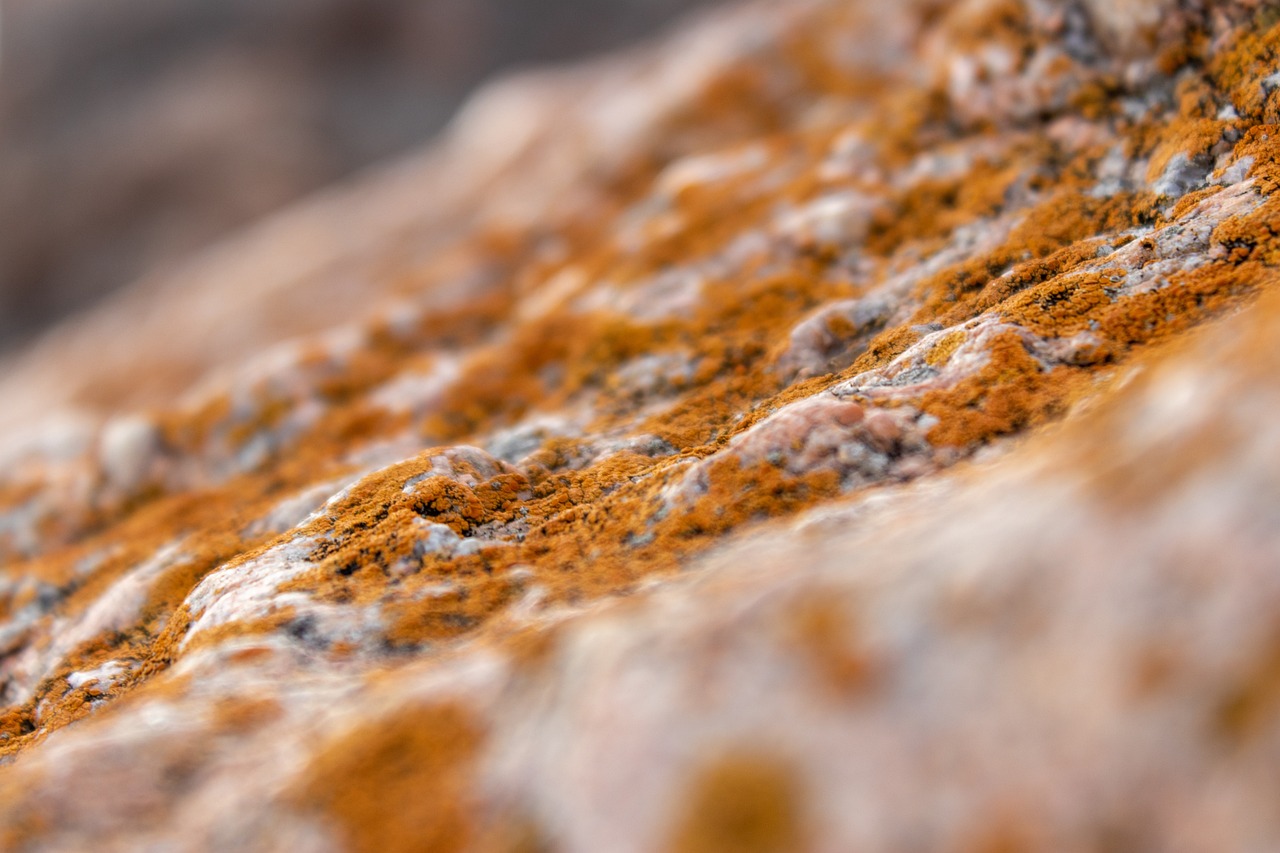
DIY Mold Removal Methods
When it comes to tackling mold in your home, taking a DIY approach can be both effective and satisfying. However, before you roll up your sleeves and get to work, it's crucial to understand the right methods and precautions to ensure you don’t inadvertently make the situation worse. First and foremost, always wear protective gear, such as gloves, goggles, and a mask, to shield yourself from mold spores that can become airborne during the cleaning process.
One of the most common and effective DIY methods for mold removal involves using a simple mixture of water and vinegar. Vinegar is a natural antifungal agent and can be quite potent against mold. To use this method, fill a spray bottle with undiluted vinegar and spray it directly onto the moldy area. Allow it to sit for at least an hour before wiping it away with a damp cloth. This not only removes the mold but also helps to prevent it from returning.
Another popular option is using a mixture of baking soda and water. Baking soda is a gentle abrasive that can help scrub away mold without damaging surfaces. To create this mixture, combine a quarter of a tablespoon of baking soda with water in a spray bottle. Shake it well until the baking soda dissolves, then spray it on the affected area. After letting it sit for a few minutes, scrub the area with a brush, and rinse with water. This method not only cleans the mold but also deodorizes the area, leaving your home smelling fresh.
For more stubborn mold infestations, a bleach solution can be used, but it’s important to exercise caution. Mix one cup of bleach with a gallon of water and apply it to the affected area. However, never mix bleach with ammonia, as this can produce toxic fumes. After applying the bleach solution, allow it to sit for at least 10 minutes before scrubbing and rinsing. Remember, bleach is only effective on non-porous surfaces, so it may not be suitable for porous materials like wood or drywall.
In addition to these methods, maintaining a clean environment can help prevent mold from returning. Regularly cleaning areas prone to moisture, such as bathrooms and kitchens, and using dehumidifiers in damp spaces can create an inhospitable environment for mold growth. Consider placing silica gel packets or activated charcoal in areas where moisture tends to accumulate, as these can absorb excess humidity.
Lastly, if the mold covers more than 10 square feet or is in a hidden area, it may be best to call in a professional. While DIY methods can be effective for small patches, larger infestations often require specialized equipment and expertise to ensure complete removal and to prevent future growth.
Q: How do I know if I have a mold problem?
A: Signs of a mold problem can include visible mold growth, musty odors, and health symptoms like coughing or sneezing. If you notice these indicators, it’s wise to investigate further.
Q: Can I remove mold myself?
A: Yes, for small areas of mold, DIY methods can be effective. However, ensure you take proper safety precautions and consider professional help for larger infestations.
Q: What should I do if the mold keeps coming back?
A: If mold keeps returning, it’s likely due to underlying moisture issues. Investigate and address any leaks or humidity problems in your home to prevent mold from reappearing.
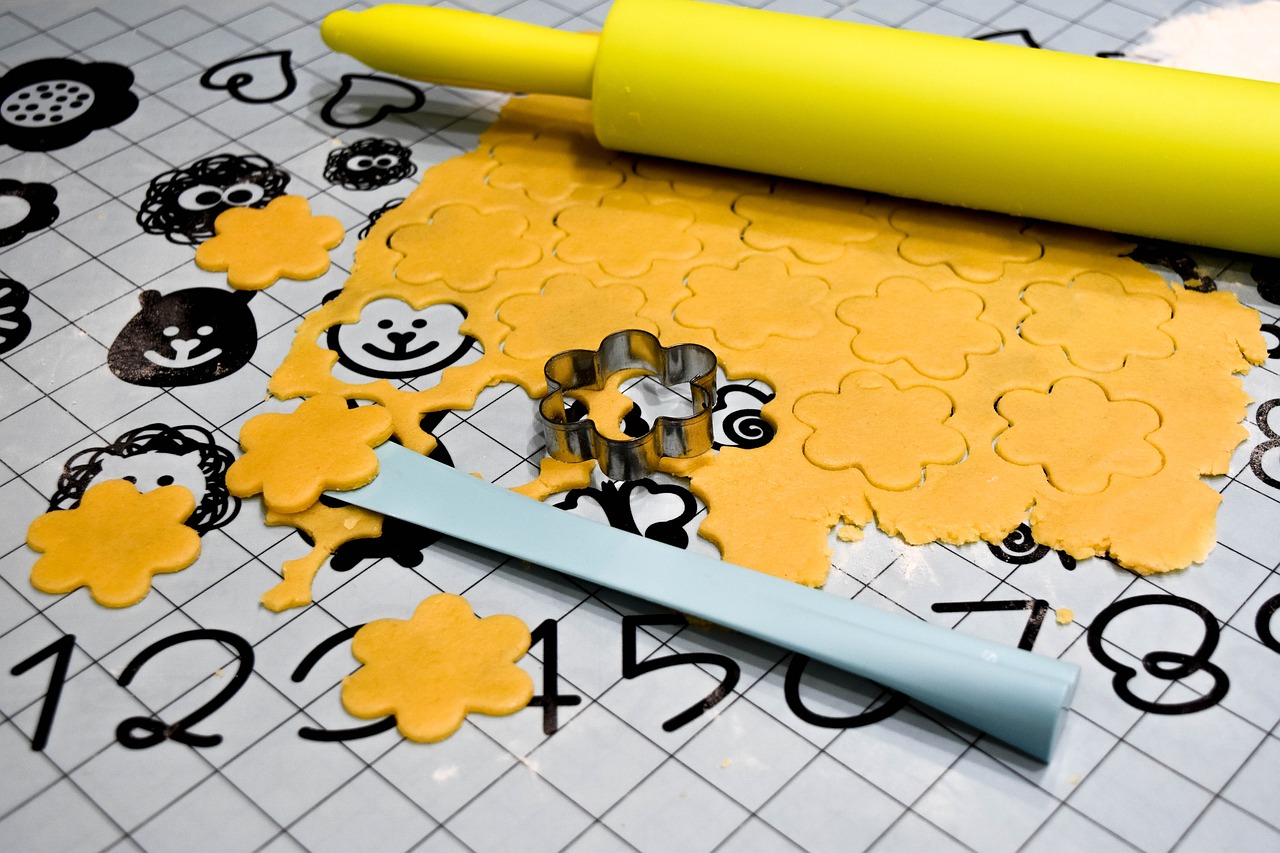
When to Seek Professional Help
When it comes to mold infestations, knowing when to call in the professionals can be the difference between a minor inconvenience and a major health hazard. If you’ve spotted some mold around your home, it’s tempting to grab a sponge and tackle it yourself. However, there are certain situations where DIY methods just won’t cut it. First and foremost, if the mold covers an area larger than 10 square feet, it’s time to pick up the phone. This size indicates a more serious infestation that may require specialized equipment and techniques to ensure complete removal.
Another critical factor to consider is the type of mold you’re dealing with. Some molds, like Stachybotrys chartarum (commonly known as black mold), can produce mycotoxins that pose serious health risks. If you suspect that you have this type of mold, it’s essential to consult a professional who can assess the situation accurately and take appropriate action. Additionally, if anyone in your household has respiratory issues, allergies, or a weakened immune system, it’s best to err on the side of caution and seek expert help.
Here are some other signs that indicate it’s time to call in the pros:
- Persistent Mold Growth: If mold keeps returning despite your cleaning efforts, it’s likely that the underlying moisture issue hasn’t been resolved.
- Water Damage: If your home has experienced significant water damage from flooding or leaks, the chances of hidden mold growth increase dramatically.
- Unusual Odors: A strong, musty smell that doesn’t go away could be a sign of mold hiding behind walls or under floors.
In these cases, professionals not only have the right tools but also the expertise to identify and eliminate the root cause of the mold. They can conduct thorough inspections, including air quality testing, to ensure that all mold spores are effectively removed. Furthermore, they can provide valuable advice on how to prevent future mold growth, ensuring that your home remains a safe haven for you and your family.
In summary, while tackling small mold problems yourself can be feasible, larger infestations, particularly those involving toxic molds, require professional intervention. Don’t hesitate to reach out for help when you need it; your health and safety should always be the top priority.
1. How can I tell if the mold in my home is toxic?
While it’s difficult to identify toxic mold just by looking at it, certain types like black mold are known for their health risks. If you’re unsure, consider hiring a professional for testing.
2. Can I remove mold myself?
For small patches of mold, you can use a mixture of water and detergent to clean it. However, if it’s extensive or if you have health concerns, it’s best to consult a professional.
3. What are the health risks of mold exposure?
Mold exposure can lead to various health issues, including respiratory problems, allergies, and skin irritation. It’s particularly dangerous for individuals with pre-existing health conditions.
4. How can I prevent mold growth in my home?
Maintaining low humidity levels, ensuring proper ventilation, and addressing leaks promptly can help prevent mold growth.
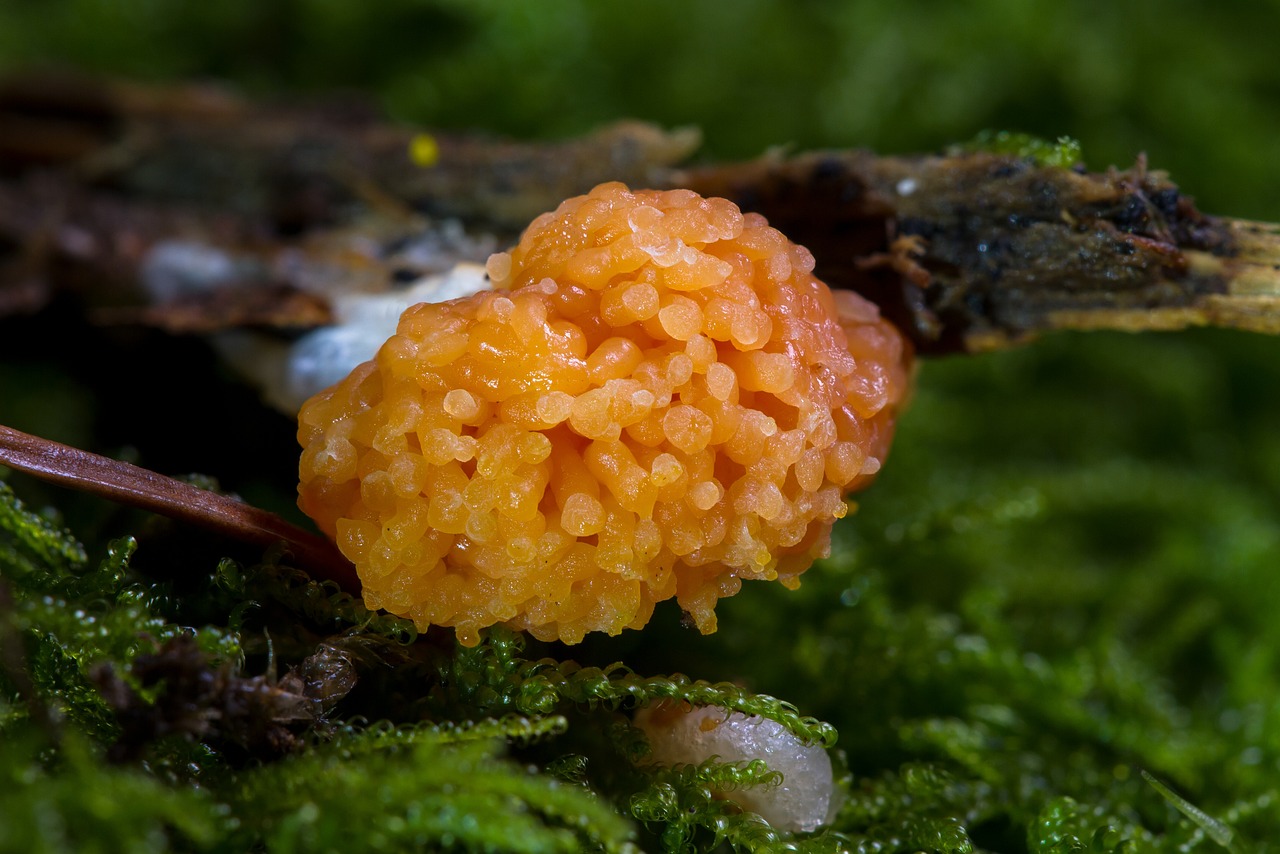
This article explores the dangers of toxic molds in homes, how to identify them, and effective prevention and remediation strategies to ensure a safe living environment for you and your family.
Toxic molds can pose serious health risks. This section delves into the types of toxic molds, their characteristics, and how they can affect indoor air quality and overall health.
Recognizing the signs of mold infestation is crucial. Here, we outline common indicators that suggest the presence of mold in your home, including visual clues and musty odors.
Visible mold growth can be alarming. This subsection discusses how to identify mold patches on various surfaces and what they might indicate regarding moisture levels in your home.
Mold comes in various colors, each potentially indicating different types. We explore the significance of color variations and what they mean for your health and home.
A musty smell often accompanies mold presence. This section explains how to detect these odors and their implications for indoor air quality and health risks.
Mold exposure can lead to various health issues. This part discusses the symptoms and conditions linked to toxic mold exposure, emphasizing the importance of addressing infestations promptly.
Prevention is key to a mold-free home. Here, we outline effective strategies for reducing moisture and improving ventilation to prevent mold growth in your living spaces.
Maintaining optimal humidity levels is essential. This subsection provides tips on monitoring and controlling indoor humidity to create an inhospitable environment for mold.
Effective ventilation can significantly reduce mold risks. We discuss various ventilation techniques that can help keep your home dry and mold-free.
If mold is found, prompt action is necessary. This section covers various remediation strategies, including DIY methods and when to call in professionals for effective mold removal.
For minor infestations, DIY methods can be effective. This subsection outlines safe and practical steps homeowners can take to remove mold without professional help.
Some mold situations require expert intervention. Here, we highlight signs that indicate when it’s time to contact a mold remediation professional for safe and thorough removal.
Here are some common questions regarding toxic molds and their impact on your home:
- What are the most common types of toxic molds?
Some of the most common toxic molds include Stachybotrys chartarum (black mold), Aspergillus, and Penicillium. Each type can have different effects on health and requires specific remediation approaches. - How can I tell if mold is toxic?
While you cannot determine toxicity just by looking at mold, symptoms of exposure, such as respiratory issues or allergic reactions, can indicate a problem. A professional mold inspection is the best way to assess the situation. - Can I prevent mold growth altogether?
While it may be impossible to completely eliminate mold, you can significantly reduce its growth by controlling humidity, ensuring proper ventilation, and addressing leaks promptly. - How often should I check my home for mold?
It's advisable to check your home for mold at least once a year, especially in areas prone to moisture, such as basements and bathrooms.
Frequently Asked Questions
- What are toxic molds and how do they affect health?
Toxic molds, such as Stachybotrys chartarum (commonly known as black mold), can release harmful spores into the air. Exposure to these spores may lead to a variety of health issues, including respiratory problems, allergic reactions, and in severe cases, neurological symptoms. It's crucial to identify and address mold infestations promptly to protect your health.
- How can I identify if there is mold in my home?
Look for visible signs of mold growth, such as dark patches on walls or ceilings, especially in damp areas. Additionally, a musty odor often indicates mold presence. If you notice any of these signs, it may be time to investigate further or consult a professional.
- What steps can I take to prevent mold growth?
To prevent mold, control humidity levels by using dehumidifiers and ensuring proper ventilation in your home. Regularly inspect areas prone to moisture, like bathrooms and basements, and fix any leaks promptly. Keeping your home dry and well-ventilated is key to avoiding mold.
- What DIY methods can I use for mold removal?
For minor infestations, you can use a mixture of water and vinegar or bleach to scrub mold off surfaces. Always wear protective gear, like gloves and a mask, when cleaning mold. However, ensure that the area is well-ventilated and consider professional help for larger infestations.
- When should I call a professional for mold remediation?
If the mold covers a large area (greater than 10 square feet), or if you have health concerns, it's best to consult a mold remediation professional. Additionally, if the mold is caused by contaminated water or if you suspect it may be a toxic variety, professional help is essential to ensure safe and thorough removal.



















